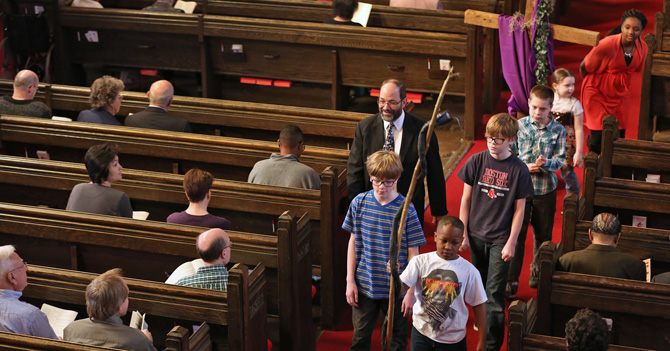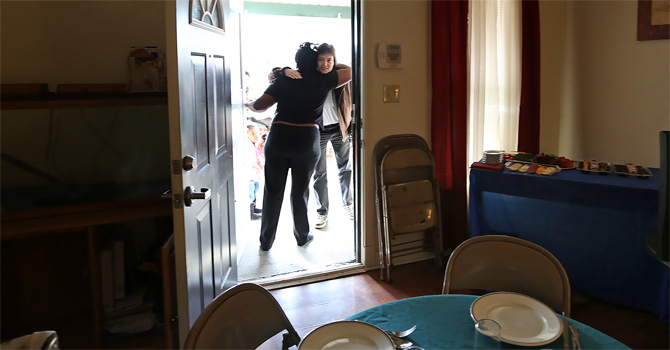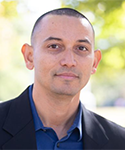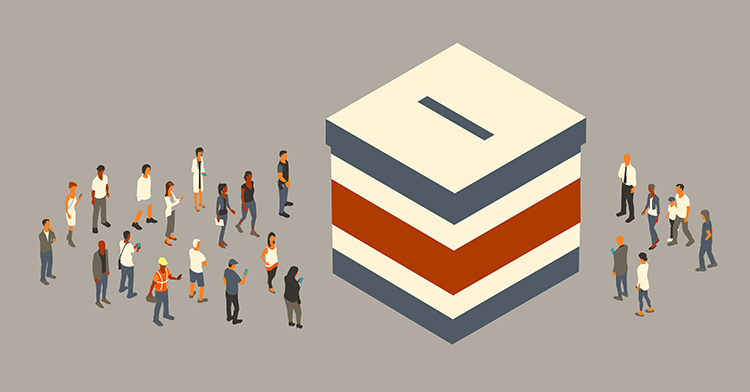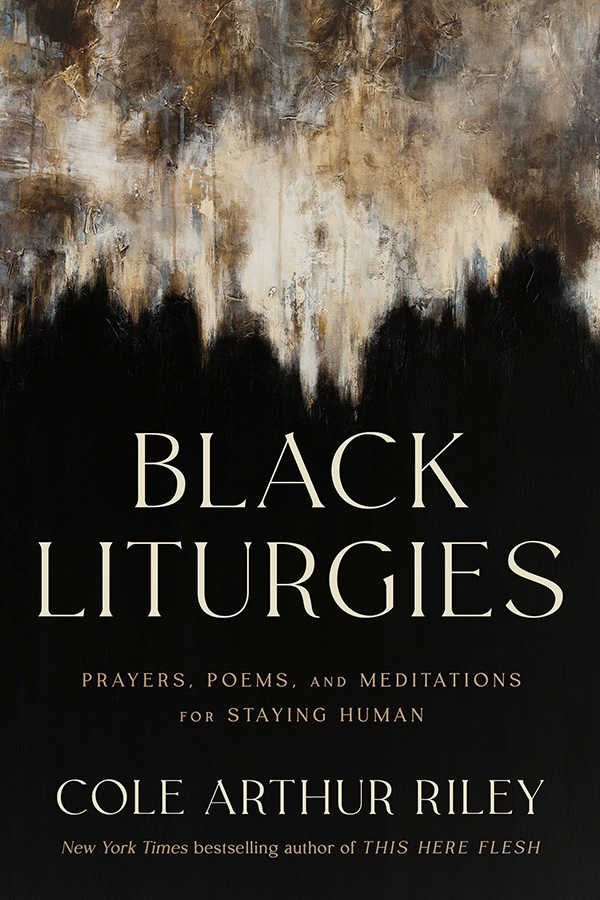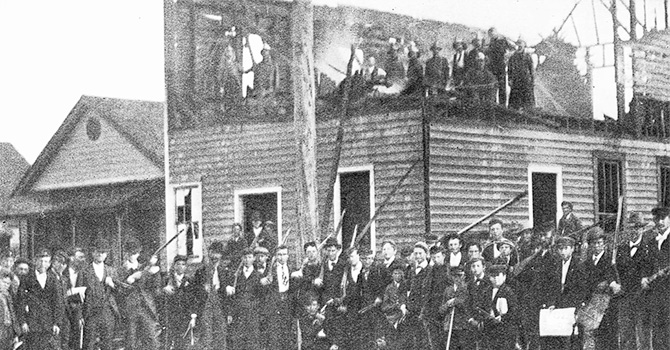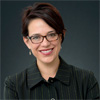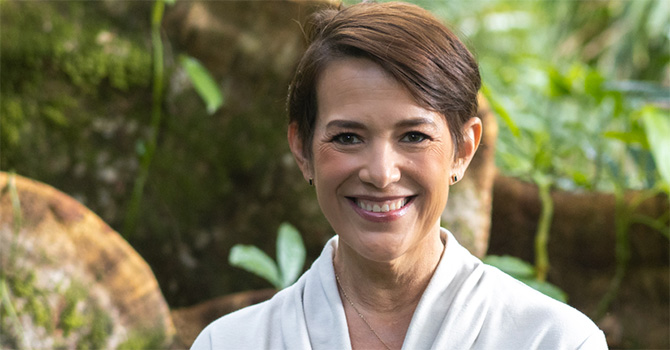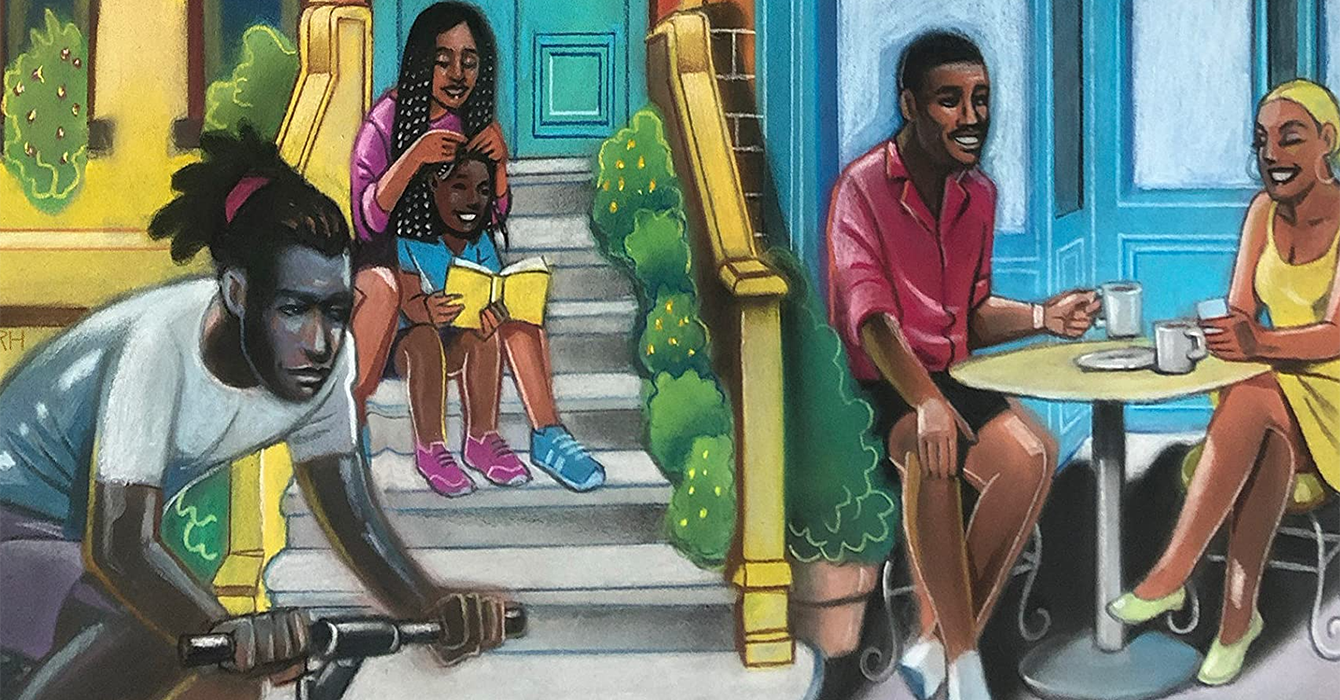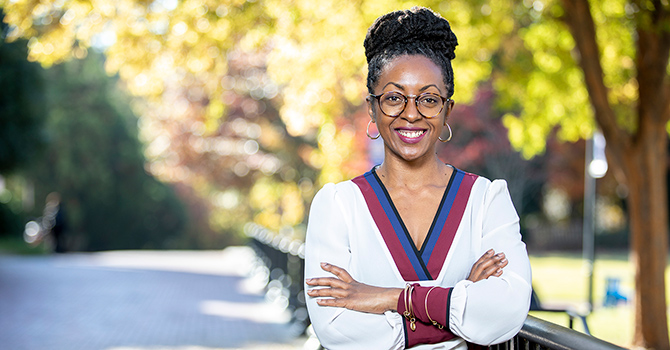Most people and institutions that want to serve poor communities are focused on what the residents lack. “What are the needs?” is often the first question asked.
John McKnight says that approach has it backward.
“I knew from being a neighborhood organizer that you could never change people or neighborhoods with the basic proposition that what we need to do is fix them,” he said. “What made for change was communities that believed they had capacities, skills, abilities and could create power when they came together in a community.”
McKnight is co-director of the Asset-Based Community Development Institute and professor emeritus of communications studies and education and social policy at Northwestern University.
He and his longtime colleague John Kretzmann created the asset-based community development (ABCD) strategy for community building. Together they wrote a basic guide to the approach called “Building Communities From the Inside Out: A Path Toward Finding and Mobilizing a Community’s Assets.”
McKnight also wrote “The Careless Society: Community and Its Counterfeits” and, with co-author Peter Block, “The Abundant Community: Awakening the Power of Families and Neighborhoods.”
McKnight spoke to Faith & Leadership about asset-based community development and the role the church can play in helping people identify and leverage their strengths to empower their communities. The following is an edited transcript.
Q: What is asset-based community development?
Our most common metaphor is a glass with water up to the middle. Is the glass half-full or half-empty? In our time, particularly in terms of cities and lower-income people, the institutions -- including almost all the churches -- look at those neighborhoods and they focus on the empty half of the glass.
They call the empty half “needs.” These people are needy, or they’re needy neighborhoods, right? That is the beginning point of almost all responses by institutions to lower-income and minority neighborhoods. This was something that I experienced in my life as a neighborhood organizer before I came to the university.
If you’re a neighborhood organizer, you have to start with the belief that the people here have capacities and abilities and that if they come together in a community organization, they can be powerful.
I knew from being a neighborhood organizer that you could never change people or neighborhoods with the basic proposition that what we need to do is fix them.
What made for change was communities that believed they had capacities, skills, abilities and could create power when they came together in a community -- that that’s how change happens.
I’ve never seen a low-income neighborhood that really changed because they finally got enough health, human service, religious or government agencies fixing them. That doesn’t work. It may make life more tolerable for individuals, but it doesn’t change communities.
Asset-based community development is a phrase for the resources that exist in communities where people don’t seem to have a lot of money.
What we were doing was identifying the resources that are there, and we called those resources “assets,” so that we could say, “If you want to know what is in a neighborhood -- not what’s wrong, not what are the problems, not what are the needs, but what are the problem-solving resources in a neighborhood -- those are assets.”
You have to start with what you have before you know what you need. Institutions can be helpful, but always in the second stage of a community’s life. The first stage has to be, “What do we have, and what can we do with it?”
The second stage is, “What can outside institutions do in addition to what we can do?”
Helping institutions that are focused on needs teach people in the neighborhood, “What you need to do is start with a needs survey. We don’t care at all how many of you can do carpentry; what we want to know is how many of you have bad eyes.”
But because institutions are so powerful and have so much money, they create a culture of neediness.
That’s the basic proposition of our work. We published a workbook called “Building Communities From the Inside Out: A Path Toward Finding and Mobilizing a Community’s Assets.” It has become the alternative to the world of helping through a needs focus.
Institutions that are helpful provide support or incentives for local people to focus on what resources they have, and that particular neighborhood has, and how they can be connected, to begin to make the people feel they are producers rather than clients.
That’s the great shift that we’re trying to focus on -- that the real issue of having empowerment is whether you are a producer or a client.
Q: What role can churches and church institutions play?
I would say that there is more recognition of the full half in the church field than there is in the health, human service, government fields.
You can see churches that are attempting to manifest themselves as neighbors rather than saviors. There are church leaders who understand that the guiding Christian principle is friendship, not service. It’s those people who I think are the light of the world.
If I were saying something to church people, I would say, “Go spend time with people who have friendly churches, who are part of a neighborhood rather than serving the neighborhood, who are as enhanced by the relationship with the people and the place as they are part of enhancing that place and people.”
In our book, there’s a chapter on churches that has a series of examples of what churches do when they are friendly rather than serving. I’d be much harder pressed to find that kind of thing in the other helping fields, so we recognize the churches for positive examples in the book.
That’s another asset-based understanding -- that in anything to be done, the question is, “Who produces it?” Not, “Who do we consult; who do we have as advisors; who do we allow to be our shadow assistants?” but, “Who’s the producer?”
So when we look at anything, the question we ask is, of the outcome, “Who’s the producer?” If the institution did it all, you have put another foundation stone in the dependency system.
There’s this idea, which really has grown hugely in my lifetime, that somehow if you surround people with enough services, that’s what makes a good life. What makes a good life is being surrounded by friends who are mutually productive with you so that you have greatly diminished the services you need or use.
Q: So you’re not just talking about poor people, then. You’re talking also about …
Anybody. I meant that; we started out doing the research in low-income neighborhoods, but it’s true every place. This understanding is manifested now in ABCD Europe. There’s Global South ABCD. There’s a Pacific Rim ABCD. So it’s something that crosses cultural boundaries.
Q: What made you think of this? How did you come to think differently from other people about this core issue?
Why did I think of it? I know why I thought of it. If you’re a neighborhood organizer -- I was an organizer in neighborhoods in the [Saul] Alinsky tradition -- to get something done, you’ve got to see that people have integrity, productivity, capacities and that if you put them together, if you connect them, that they will multiply in their power to be productive and to deal with outside institutions.
You can’t organize people by saying, “I’m here because you’re a poor, pitiful soul,” right? “God, you’ve had a bad life, and I feel sorry for you. I feel compassion for you.” That would never organize people.
If I’m a doctor, the proof of my effectiveness is I served 1,000 people this year. I did something about their empty half. That’s fine. I go to a doctor; it’s a noble profession. But as a neighborhood organizer, you’ve got to be a full-half person, not an empty-half person.
Then, when I was about 40, Northwestern University asked me to come there and help them start an urban research center. Everybody else was an academic, but they felt they had to have somebody who had been really active in the city, in Chicago, so they invited me to come and they made me a professor.
It’s 1969 and the cities are burning, and all the institutions say, “My God, we’d better do something, finally, about these people.”
So I entered that world and found that the research being done about neighborhoods was all about what was wrong -- needs surveys. The policies that were developed were developed on the premise that needs were met by institutions and if you strengthened and enhanced institutions, then everything would be OK.
I personally was insulted by what I found, because I could tell that these were not the people I knew, that I had organized, that were my friends.
I thought if I could bring anything to this place, it would be to see if you could get them to consider the possibility that these people were not broken and needy problems but they were people like them who had problems and assets.
So we got a grant and we collected about 3,000 stories of what people had done with the resources they have, from cities all across North America, in lower-income neighborhoods.
That’s what “Building Communities From the Inside Out” is. It has had influence on quite a few institutions of all kinds -- on some churches, on some governments, on some social service agencies, on people in the public health field, and some people in business, even.
Q: Were you motivated by your own faith as a Christian to pursue this work?
I would say it’s one part. I’m a loosely Episcopal person, but the current things you see on the website are the result of a lifetime of previous activities, and beliefs coming from my family.
On the McKnight side of my family, the people are all Reformed Presbyterians. They’d be called, among themselves, Covenanters. In general, they didn’t buy into most of the propositions of modern society.
Underlying most of what they tended to believe was a proposition that you couldn’t trust institutions, so I was raised in that context with a belief that in general, communities of faith were trustworthy but most institutions weren’t. The outside world was generally on the wrong track.
My Covenanter grandfather was a minister. I remember his telling me very frequently, “John, if the majority of people agree with you, you must be wrong.” That sort of sums it up.
Q: Why is it so difficult to change the thinking about communities?
It’s very clear that we have a service economy, right? The majority of our people don’t produce goods; they produce services. If I say to the service provider, “You know, if people were organized at the local level and able to identify and mobilize their own resources, they’d need you half as much,” what do you think people would think about that?
Because that’s what’s the problem. I wrote another book called “The Careless Society,” which is a series of articles which have as their basic point that we serve more and care less -- that service has replaced care, that clienthood has replaced citizenship, that productivity has been greatly diminished by dependency.
Q: A lot of what you talk about seems to be based on hope and respect. You haven’t used those words, but that’s what I hear coming through.
Yes. I like the way you’re putting it. Respect I would put way up at the top, because I’d say respect and trust are the bedrock of friendship. Now, hope -- I like that, too, but I don’t normally think in those terms. My highest value isn’t hope. It’s friendship.


